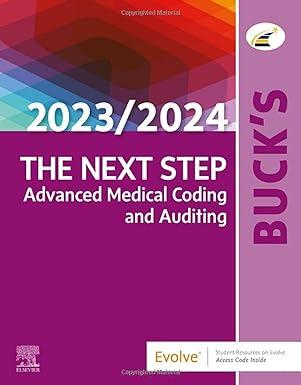Question
Denominator-level problem. Thunder Bolt, Inc., is a manufacturer of the very popular G36 motorcycles. The management at Thunder Bolt has recently adopted absorption costing and
Denominator-level problem. Thunder Bolt, Inc., is a manufacturer of the very popular G36 motorcycles. The management at Thunder Bolt has recently adopted absorption costing and is debating which denominator-level concept to use. The G36 motorcycles sell for an average price of $8,200. Budgeted fixed manufacturing ovrehead costs for 2014 are estimated at $6,480,000. Thunder Bolt Inc., uses subassembly operators that provide component parts. The following are the denominator-level options that management has been considering:
a. Theoretical capacity- based on three shifts, completion of five motorcycles per shift, and a 360-day year- 3 times 5 times 360= 5,400
b. Practical capacity- theoretical capacity adjusted for unavoidable interruptions, breakdowns, and so forth- 3 times 4 times 320= 3,840
c. Normal capacity utilization- estimated aat 3,240 units
d. Master-budget capacity utilization- the strengthening stock market and the growing popularity of motorcycles have prompted the marketing department to issue an estimate for 2014 of 3,600 units.
1) Calculate the budgeted fixed manufacturing overhead cost rates under the four denominator-level concepts.
2) What are the benefits to Thunder Bolt, Inc., of using either theoretical capacity or practical capacity?
3) Under a cost-based pricing system, what are the negative aspects of a master-budget denominator level? What are the positive aspects?
Step by Step Solution
There are 3 Steps involved in it
Step: 1

Get Instant Access to Expert-Tailored Solutions
See step-by-step solutions with expert insights and AI powered tools for academic success
Step: 2

Step: 3

Ace Your Homework with AI
Get the answers you need in no time with our AI-driven, step-by-step assistance
Get Started


